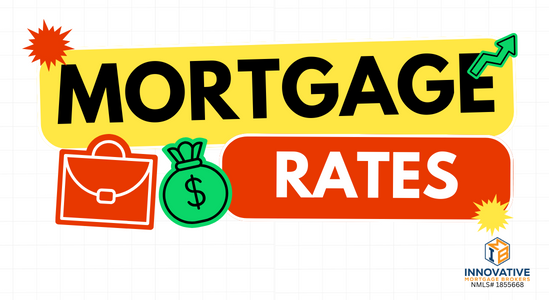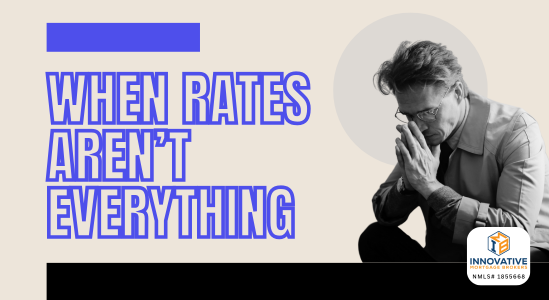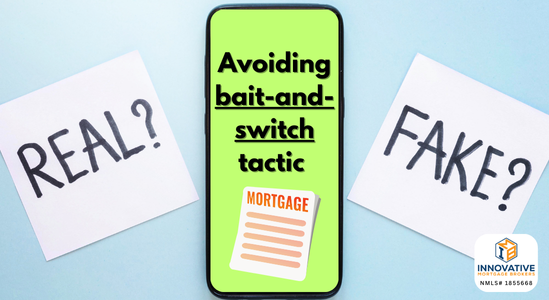How We Save You Money on Your Mortgage When shopping for a mortgage, one of…
Mortgage Interest Rates: A Deep Dive into Borrowing Costs
At Innovative Mortgage Brokers, we hold steadfast to the philosophy that knowledge is the key to making empowered decisions. In the complex world of home financing, understanding the intricacies can be a daunting task. Among the myriad terms and concepts, mortgage interest stands out as a crucial component that significantly impacts your financial journey as a homeowner.
This article is designed to unravel the mysteries surrounding mortgage interest. We aim to illuminate this often-confusing topic, turning it from an abstract number into a tangible concept that you can confidently navigate. By breaking down its definition, calculation method, types, and influencing factors, we aspire to equip you with the knowledge to make informed decisions about your mortgage choice.
What is Mortgage Interest
Mortgage interest, in its simplest terms, is the price you pay for borrowing money to purchase your dream home. Think of it as a rental fee for using someone else’s funds to make your home ownership dreams come true. It’s typically stated as a percentage of your total loan amount and forms a significant part of your monthly mortgage payments, which also include the repayment of the principal loan amount.
The Calculation Behind the Scenes
The calculation of mortgage interest might seem like a daunting mathematical challenge, but it follows a simple formula:
Loan Amount x Interest Rate ÷ Number of Payments
But what does this mean? Let’s break it down:
- Loan Amount: This is the initial amount you borrow to purchase your home.
- Interest Rate: This is the annual cost of borrowing money from your lender, expressed as a percentage of the loan amount.
- Number of Payments: This refers to the total number of monthly payments over your loan term.
By multiplying the loan amount by the interest rate and then dividing by the number of payments, you can calculate the amount of interest you’ll be paying each month.
Remember, the outstanding balance of your loan decreases with each payment, so the interest portion of your monthly payment reduces over time while the principal portion increases. This process is known as amortization.
Understanding this calculation empowers you to better comprehend the financial commitment you’re making when taking on a mortgage, allowing you to plan your finances more effectively and potentially save substantial amounts over the life of your loan.
Types of Mortgage Interest Rates
Interest rates play a pivotal role in your mortgage journey. They come in different types, each with its own benefits and considerations. Let’s dive into the two main types: Fixed-Rate Mortgages and Adjustable-Rate Mortgages.
Fixed-Rate Mortgages: Stability Over Time
In a fixed-rate mortgage, the interest rate remains unchanged for the entire duration of the loan. This kind of mortgage offers stability and predictability, as your monthly payments stay consistent.
Regardless of market fluctuations or economic changes, your interest rate stays the same. This makes budgeting easier since you know exactly what your mortgage payment will be every month. If you’re someone who values financial stability and predictability, a fixed-rate mortgage could be an excellent choice.
Adjustable-Rate Mortgages: Flexibility with Fluctuations
On the other hand, an adjustable-rate mortgage (ARM) comes with an interest rate that can vary over time. The initial interest rate is typically lower than that of a fixed-rate mortgage and remains unchanged for a set period, often five to ten years. After this initial period, the interest rate can adjust annually, which means your monthly payments may increase or decrease every year after the initial adjustment.
The adjustment is based on changes in a specific interest rate index, and the rate you pay will be a certain spread above the index. While this can lead to lower payments if interest rates decrease, it can also result in higher payments if rates rise. If you’re comfortable with a bit of uncertainty and willing to take advantage of potentially lower rates for the time being, an ARM might suit your needs.
Remember, choosing between a fixed-rate and adjustable-rate mortgage depends on your personal financial situation, your long-term plans, and your risk tolerance. It’s important to understand both options fully before making a decision. If you need a residential mortgage for a property in Pennsylvania (PA) or Florida (FL), we would love an opportunity to speak with you.
Exploring Factors Influencing Mortgage Interest Rates
Mortgage interest rates are not just arbitrary numbers. They are influenced by a combination of personal, market, and economic factors. Understanding these can help you anticipate potential changes in your interest rates and make informed decisions about your mortgage.
Credit Score: Your Financial Trustworthiness
Your credit score is a significant factor that lenders consider when determining your mortgage interest rate. It’s a numerical representation of your credit history and financial behavior. A higher credit score usually translates to lower interest rates as it signals to lenders that you are a reliable borrower who is likely to repay the loan on time.
Loan-to-Value Ratio: The Risk Assessment
The Loan-to-Value ratio (LTV) is another crucial element that influences your mortgage interest rate. This ratio compares the amount of the loan with the value of the property you’re buying. A lower LTV often results in a lower interest rate because it indicates a lower risk for the lender—if you default on the loan, the lender can likely recoup the money by selling the property.
Economic Health: The Bigger Picture
The overall health of the economy also has an obvious impact on mortgage interest rates. When the economy is robust, with high levels of employment and strong growth, interest rates tend to rise. Conversely, during economic downturns, interest rates typically fall to encourage borrowing and stimulate economic activity.
The Role of the Federal Reserve
While the Federal Reserve (the Fed) doesn’t set mortgage rates, its monetary policy decisions can significantly influence them. For example, when the Fed lowers the federal funds rate, borrowing costs throughout the economy tend to decrease, which can result in lower mortgage rates. The Fed’s goal is to control inflation, and the cost of funds is usually lower with lower inflation.
Other Influential Factors
Other factors such as the home’s location, your down payment size, the loan amount, the loan term, and the type of interest rate (fixed vs. adjustable) can also influence your mortgage interest rate.
Conclusion
Understanding how mortgage interest works can help you make more informed decisions when it comes to choosing a mortgage. Innovative Mortgage Brokers is here to guide you every step of the way in Pennsylvania (PA) and Florida (FL), ensuring you get a great deal.
Remember, mortgage interest is more than just a number—it’s a key factor that determines the total cost of your home over time. By understanding how it works, you can potentially save thousands of dollars over the life of your loan.





